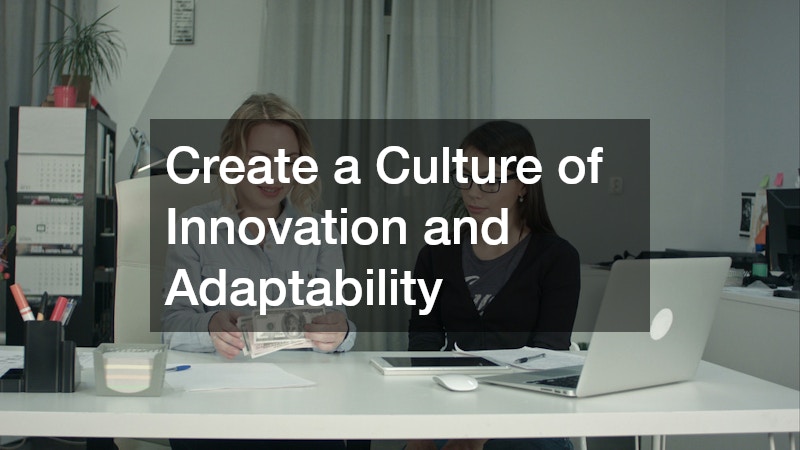Securing venture capital is a significant milestone for any startup, but keeping that funding flowing consistently is where many businesses struggle. Investors don’t just want to see a promising idea; they want proof that a startup has the stability, growth potential, and leadership needed to deliver a strong return. For founders, that means developing strategies that go beyond the first pitch and focus on long-term relationships with venture capitalists.
One of the challenges entrepreneurs face is that the funding landscape is constantly shifting. Market conditions, investor priorities, and competition among startups all influence whether capital continues to come your way. To stand out, you must not only capture investor interest initially but also demonstrate that your company has staying power. That requires a combination of financial discipline, growth planning, and transparent communication.
Venture capitalists often compare their investments to commercial real estate loans, where the value isn’t only in the property itself but in the projected return it can generate over years. In the same way, your startup’s ability to consistently expand and deliver measurable results is what keeps investors committed. Whether you’re scaling a cutting-edge manufacturing company or building traction with a local service-based venture, the principles remain the same: show reliability, prove growth potential, and communicate value clearly.
The following strategies will help you build confidence with investors and keep venture capital flowing into your startup. Each approach blends practical business fundamentals with proven investor expectations, giving you a useful roadmap for long-term success.
1. Understand Why Consistent Funding Matters

Expanding business takes more than a strong launch—it requires consistent access to capital that supports scaling operations, hiring talent, and developing products. Without steady backing, even the most promising startups risk stalling. That’s why entrepreneurs must learn how to keep venture capital flowing, not just secure it once. Investors want to see that you’re planning for growth and managing resources wisely.
Consistency also signals reliability, which is a major factor in investor confidence. When you can demonstrate a steady financial foundation, you show that your startup can weather market fluctuations and still deliver on its promises. This reassurance makes venture capitalists more likely to double down on their investment over time.
Think of consistent funding as fuel for momentum. When resources flow predictably, you can execute long-term strategies without being forced into short-term decisions that might stunt growth. Investors notice when a company can plan beyond the next quarter, and steady backing makes that possible.
Consistent capital also helps build credibility with other stakeholders—employees, customers, and potential partners. When your business has the resources to meet payroll, invest in innovation, and expand operations without interruption, it projects strength. That kind of stability not only keeps current investors engaged but also attracts new ones who want to be part of a proven growth story.
2. Build a Business Model That Attracts Long-Term Investors
A well-designed business model reassures investors in the same way a commercial real estate loan does: it shows structure, stability, and a pathway to returns. When your model reflects sustainable revenue streams and thoughtful cost management, you’re more likely to keep venture capital flowing. Long-term investors gravitate toward startups that balance ambition with sound financial planning.
Investors also look for adaptability in your business model. A structure that allows for growth in multiple directions, whether through product diversification or expansion into new markets, signals that your company can evolve with changing conditions. That flexibility makes your startup more attractive to long-term capital partners.
3. Showcase Steady and Scalable Growth
A custom business sign signals growth for a local shop, and in the same way, consistent growth signals to investors that your startup has staying power. Demonstrating scalability—whether through user acquisition, revenue increases, or market reach—makes it easier to keep venture capital coming in. Investors want evidence that their money fuels expansion, not stagnation.
Scalability also reduces perceived risk. When you can prove that your systems, processes, and infrastructure can handle a larger customer base without breaking down, you reinforce investor confidence. Showing that growth can be replicated and scaled effectively is often the deciding factor in continued funding.
Investors also look for predictability in your growth curve. Even if expansion happens in small, incremental steps, demonstrating a consistent upward trend tells investors that their capital is generating measurable results. This kind of steady progression can be more persuasive than occasional bursts of growth followed by long plateaus.
Another powerful way to showcase scalability is through strategic expansion into adjacent markets or product lines. When investors see that your growth isn’t limited to a single channel but can extend across multiple opportunities, they gain confidence that your business has the potential to reach a much larger scale. That broader vision makes continued funding more likely.
4. Strengthen Your Startup’s Value Proposition

Just like a local business sign communicates why people should stop and take notice, your value proposition tells investors why your startup matters. A clear, compelling offering keeps venture capitalists engaged by proving your company addresses a real need in a unique way. Sharpening your message helps you stand out in a crowded funding environment.
A strong value proposition also provides clarity during investor evaluations. When decision-makers can quickly grasp what sets your business apart and how it delivers measurable value, they’re more likely to view you as a worthy long-term investment. This clarity prevents confusion and builds lasting trust.
5. Demonstrate a Clear Path to Profitability
Think of it like an industrial pump service—investors want to see that your business machinery runs smoothly and leads toward sustainable profit. A startup that can show specific timelines, revenue models, and growth strategies is far more likely to keep venture capital support. Profitability doesn’t have to be immediate, but the road map should be clear.
What matters most is credibility. Investors don’t expect unrealistic overnight success, but they do want to see milestones and financial projections backed by evidence. By consistently meeting smaller benchmarks on the way to profitability, you build confidence that your larger financial goals are within reach.
A clear profitability plan also demonstrates financial discipline. When you can show that your business is controlling expenses, maximizing efficiency, and strategically reinvesting revenue, investors see proof that their capital is being used wisely. This kind of stewardship reassures them that growth is sustainable rather than reckless.
Profitability planning also protects you during downturns. A startup with a well-defined path to sustainable revenue can weather market fluctuations better than one relying solely on continuous new funding. By proving that your company can stand on its own over time, you not only secure ongoing venture support but also position yourself as a lower-risk investment in the long run.
6. Craft Transparent and Regular Investor Updates
Communication is everything. Just as a hydroseeding company maintains trust by keeping clients updated on progress, startups must keep investors informed with honest, regular updates. Transparency about wins, losses, and next steps helps keep venture capital relationships strong and prevents surprises that can scare off backers.
Regular updates also foster collaboration. When investors feel informed, they’re more likely to provide valuable advice, connections, and resources that benefit your business. Keeping the communication lines open transforms investors from passive backers into active partners in your growth.
7. Leverage Metrics That Matter to Venture Capitalists

Numbers tell the story. Just like a crane company relies on precision and measurable strength, your startup needs to present investors with meaningful metrics—customer acquisition cost, lifetime value, churn rates, and recurring revenue. By focusing on the right performance indicators, you’ll keep venture capitalists confident in your trajectory.
When you track and present these metrics consistently, you not only validate your growth story but also highlight areas where improvements are being made. This level of data-driven transparency reassures investors that you’re actively managing risks and optimizing performance, which strengthens their commitment.
Metrics also help tell a compelling narrative about your startup’s potential. When you can show how each key performance indicator ties directly to growth, market share, or revenue, investors gain a clearer understanding of your trajectory. This demonstrates that your business decisions are informed by measurable results, not guesswork.
Finally, benchmarking your metrics against industry standards adds credibility. Showing investors that your performance compares favorably with competitors or aligns with market trends reinforces confidence in your strategy. When numbers speak clearly, it’s easier to justify additional funding rounds and keep venture capital flowing.
8. Build a Strong and Experienced Leadership Team
Investors often say they invest in people as much as in ideas. A cutting edge manufacturing company succeeds because of its expert engineers and leaders, and the same applies to startups. By building a skilled, credible team, you demonstrate stability and competence, making it easier to keep venture capital flowing into your business.
An experienced team also reduces dependency on a single founder. When leadership responsibilities are distributed among knowledgeable professionals, investors see less risk of collapse if one person exits. A strong, well-rounded team signals continuity and resilience, which keeps capital flowing steadily.
9. Create a Culture of Innovation and Adaptability

Markets evolve quickly, and startups must evolve with them. A glass company may adapt by offering new designs or eco-friendly products, and your startup should showcase similar adaptability. By fostering a culture that embraces change and encourages innovation, you’ll keep venture capitalists reassured that your business can thrive in shifting conditions.
Adaptability also demonstrates foresight. When your team can identify industry trends early and adjust strategy accordingly, you show investors that your business isn’t just reacting to change but anticipating it. That proactive approach makes your company more attractive for continued funding.
An innovative culture encourages employees to experiment, share ideas, and challenge assumptions. Investors recognize that startups fostering creativity are better equipped to find new opportunities and solve unforeseen problems. This mindset not only drives product development but also strengthens the overall resilience of the company.
Adaptability also means having processes that allow for rapid pivoting without losing operational efficiency. Startups that can test, iterate, and implement changes quickly reduce risk and demonstrate that their growth is sustainable even in volatile markets. This agility gives investors confidence that their capital is being used to back a forward-thinking, resilient business.
10. Strengthen Customer Acquisition and Retention Strategies
Investors know that loyal customers drive long-term revenue. Just as a water damage company thrives by combining new customer leads with repeat business, your startup must prove it can both attract and retain clients. Strong acquisition and retention strategies show that your venture can sustain momentum, helping you keep venture capital support ongoing.
Retention, in particular, is a powerful signal to potential investors. A loyal customer base indicates that your product or service provides real, lasting value, which reduces volatility and stabilizes revenue. When you pair effective acquisition tactics with high retention rates, investors see proof of a durable business model.
Focusing on customer feedback and engagement strengthens retention and builds advocacy. When your clients feel heard and valued, they’re more likely to continue using your products or services and recommend them to others. Demonstrating that you can maintain a loyal and growing customer base signals stability and long-term revenue potential to investors.
Securing venture capital is just the beginning; keeping it flowing requires strategy, discipline, and clear communication. Investors don’t commit their funds indefinitely without evidence that a startup can grow, adapt, and deliver meaningful returns. That’s why each of the strategies outlined—whether building a strong business model, demonstrating steady growth, or cultivating an adaptable company culture—plays such an essential role in your long-term success.
Much like a commercial real estate loan or an industrial pump service, venture capital investment is about trust, reliability, and the promise of future value. Entrepreneurs who treat investor relationships as partnerships rather than one-time transactions stand the best chance of keeping their ventures funded over time. Consistent reporting, measurable progress, and a strong leadership team provide the foundation for those relationships, while innovation and customer loyalty give investors confidence in a sustainable future.
Ultimately, keeping venture capital coming to your startup isn’t about a single strategy but the combination of many working together. By showing investors that you’re not only chasing growth but also building a resilient, adaptable business, you position your company for enduring success. When you can prove that your startup creates real value—both for its customers and its backers—you won’t just attract capital, you’ll keep it.




